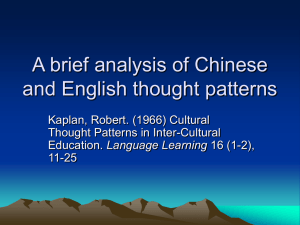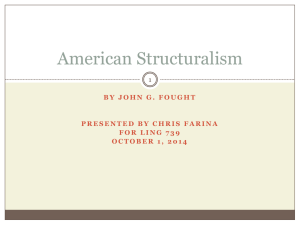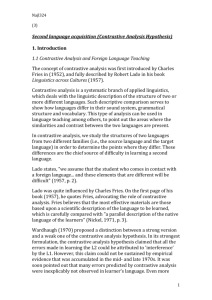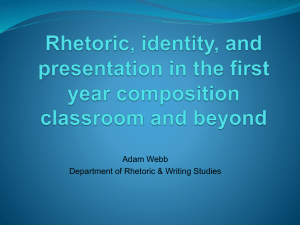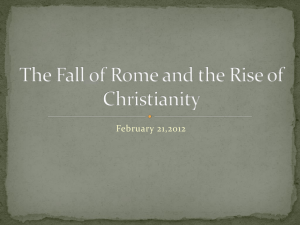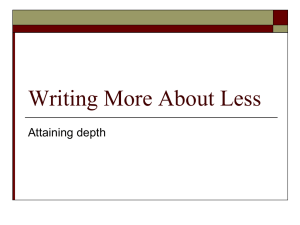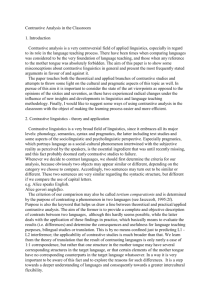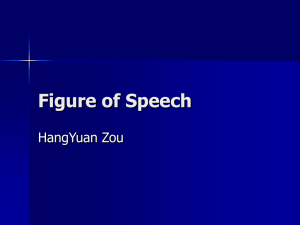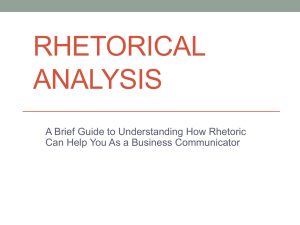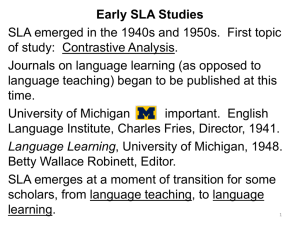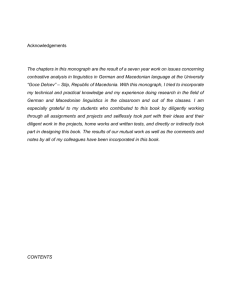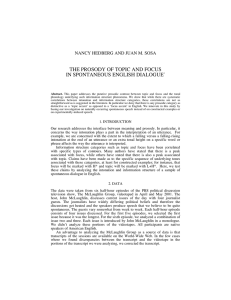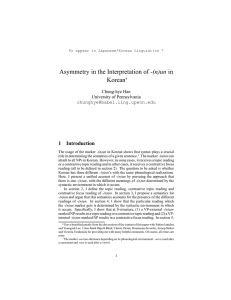Contrastive Rhetoric and Learning Centers latest
advertisement
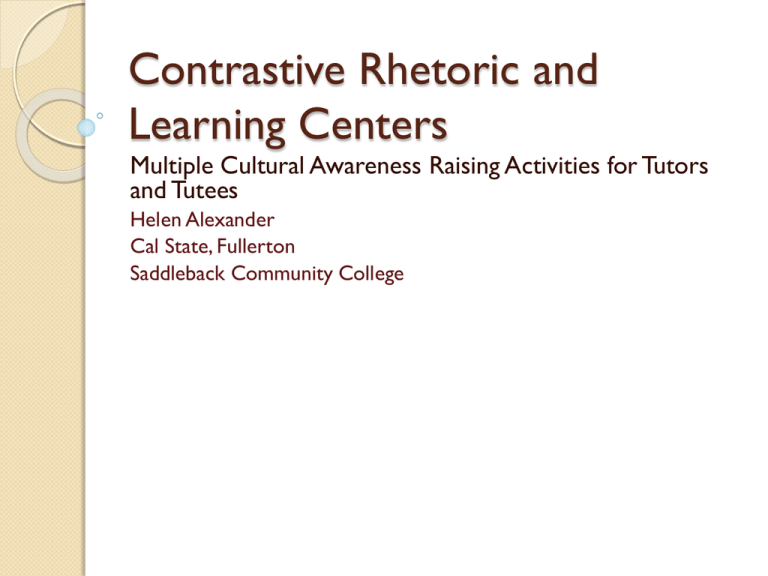
Contrastive Rhetoric and Learning Centers Multiple Cultural Awareness Raising Activities for Tutors and Tutees Helen Alexander Cal State, Fullerton Saddleback Community College Overview Kaplan’s theory of contrastive rhetoric ◦ Limitations and detractions Activities for learning centers to use this theory based on Severino’s work ◦ Tutors ◦ Tutees in workshop or portfolio structures Objectives Awareness of the diverse ways that ideas can be organized in writing to convey a message. Practice with contrastive rhetoric, an approach designed to use the diversity of organizational patterns to help both instruct and build understanding. Concrete, ethnographic activities that can be taken back to the classroom or center to be used as training for tutors or enriching projects for tutees. Activity #1 What makes writing good? Right now, take 5 minutes and jot down a rough paragraph about what you think good writing is. Also write down your: ◦ Educational background (major) ◦ Writing training (outside of school) ◦ Current job title (teacher, trainer, administrator) Kaplan’s Original Theory Kaplan’s original work pertained mostly to inter-language differences, but fields and contexts have their own approaches as well (see Jones, 2007). Kaplan, R. B. (1966). Cultural thought patterns in intercultural communication. Language Learning, 16, 1-20. ◦ For ESL teachers, focused on ideas for helping predominantly advanced, adult ESL writers acquire what they needed to communicate in written form. ◦ Incorporated a study using 598 international student essays representing 3 groupings (Middle Eastern/ Asian/ European*) to illustrate that the logical order of a paragraph varies from language to language, and discussed how contrastive rhetoric can be used to help non-native speakers learn to write expected-English paragraph structures. ◦ While recognizing more work still needed to be done, a preliminary attempt to show the different structures to help students & teachers compare paragraph organization and logic has become known as the “Doodle” theory. Kaplan’s Activities Scrambled sentences & topic sentence/supporting ideas (Kaplan, 1966). Please take the envelope on your table and arrange the sentences therein in a way that you believe to be most logical. Share your results with another person/pair. Justify your answers. Concerns Raised Leki (1991) ◦ Intuitive versus quantifiable data ◦ Process versus product controversy Focusing on the text does not mean process is ignored. ◦ Developing writer, or interference? To say an L2’s problems (or even a native speaker!) are just those of an inexperienced writer is to denigrate their previous education and schema. ◦ Modern research (80s on): Focus and Limitations Insight into cultural predispositions or stereotypes? Difficulties in choosing “typical” texts or even text-types Examining form versus linguistic &/or discourse features Metacognitive & audience awareness and student esteem as pedagogical advantages Scollon (1997): ◦ Rhetoric or Poetics? More than structural studies (poetics) need to be taken into account to make contrastive studies and consequently contrastive practices effective for helping non-native speaker learn. ◦ Context and medium need more attention as well. CR Revisited Kaplan’s contribution to a book for approaches to writing (1997) brings into focus a pedagogical approach to contrastive rhetoric by illustrating how the answers to the questions: ◦ ◦ ◦ ◦ What can be discussed? What is evidence? How can that evidence most effectively be organized? To whom may this text be addressed? are at the heart of what students need to be conscious of when writing meaningful text. He posited a model of text generation and reception, and an in-class visual implementation of contrastive rhetoric analysis, designed to raise the students’ awareness of all the factors in creating a comprehensible text in the target language. Severino’s Approach: Self-as-Writer ESL students would write about what was good writing and how they learned to write in their home countries. It asked them to contrast this experience with what their teachers expected here, and the tutors or organizers would ask follow-up questions, enabling this original document to be a central piece as multiple texts soon grew from this initial exploration. This allows: ◦ The students and tutors to build autonomy and knowledge about their own schema. ◦ The teachers and center to create ethnographic artifacts that can be used for research and training materials. Other Activities You don’t know what you don’t know until you know it! Why does this not work in academic writing? ◦ ESL approaches from highly educated fields Psychology (Spanish first language) Engineering PhD (Korean first language) Reverse Outlining ◦ Break down your own writing—what did you do? Why? How can you revise it to better meet your readers’ needs? References Jones, A. (2007). Multiplicities or manna from heaven? Critical thinking and the disciplinary context. Australian Journal of Education, 51(1), 84-103. Kaplan, R. B. (1966). Cultural thought patterns in intercultural communication. Language Learning, 16, 1-20. Kaplan. R. B. (1997). Contrastive rhetoric. In Tom Miller (Ed.), Functional approaches to written text: Classroom applications (pp. 18-32). ERIC. Washington, DC.: United States Information Agency. Leki, I. (1991). Twenty-five years of contrastive rhetoric: Text analysis and writing pedagogies. TESOL Quarterly, 25(1), 123-143. Scollon, R. (1997). Contrastive rhetoric, contrastive poetics, or perhaps something else? TESOL Quarterly, 31(2), 352-358. DOI: 10.2307/3588051 Severino, C. (1993). The doodles in context: Qualifying claims about contrastive rhetoric. Writing Center Journal, 14(1), 44-62.
